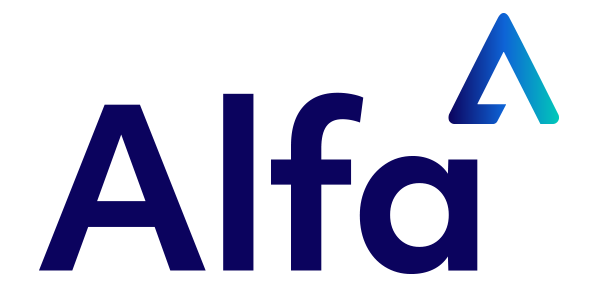
In today’s rapidly evolving business landscape, digital transformations, often enabled by cutting-edge software, are helping asset financers to survive and thrive. Getting new technology platforms up and running can be an onerous process – but doing so is vital for organisations juggling changing customer preferences while navigating legislative responsibilities.
But firms face a quandary: they are aiming for a moving target. With the pace of innovation accelerating and technology landscapes becoming more interconnected, teams must simultaneously maintain operational efficiency while planning for future growth. And any transformation project comes with inherent risk and complexity. Although successful implementations create competitive advantages, a slapdash approach can lead to outright failure.
Asset financers have a range of hosting options available in any new software deployment. Each has its own costs and benefits. One example is how to host the software; some firms may wish to self-host through on-premise hardware or external data centres, an approach whose perceived advantages in terms of control and security – especially when handling sensitive data – can be appealing. But it can also be prohibitive; self-hosting is impossible without the right expertise in software deployment, maintenance and monitoring. Training employees to manage these needs, or hiring those who can, takes time and money.
Another model involves partnering with Managed Service Providers (MSPs). MSPs host the software on behalf of the organisation. With software deployment and infrastructure maintenance handled by the MSP, they take on some of the up-front burdens associated with self-hosting. But MSPs often rely on software vendors for expertise; this can create a muddled chain of responsibilities, creating confusion when something goes wrong.
A third model – the Software-as-a-Service, or SaaS, model – is gaining traction among automotive and equipment financers. Vendors host software on a public cloud, allowing organisations to use it through a flexible, subscription-based pricing model. Unlike the self-hosting scenario, access to the software is typically immediate, often in a matter of minutes from sign-up. And unlike MSPs, vendors assume responsibility for software deployment, infrastructure maintenance and operational support. Meanwhile users can focus on their core business operations, safe in the knowledge that securing and managing the platform is being taken care of.
SaaS is the future
SaaS is not a new concept. But in a world where requirements around privacy are becoming more stringent, and customer data is becoming richer and more complex, SaaS boasts several advantages that are helping to increase its appeal as a deployment model.
One such advantage relates to data storage and management. Single-tenant SaaS, in particular, fully segregates each customer’s environments with dedicated services, and this ensures secure, separate storage of customer data which reduces cross-access and contamination risks. Industries handling sensitive customer information are at risk of legislative non-compliance and data leaks, both of which can be disastrous. And these problems will be compounded if their resolution is left to inexperienced staff – adding further weight to the risks associated with self-hosting.
Another advantage is enhanced security. SaaS providers shoulder responsibility for securing the platform, including ensuring robust authentication and authorisation mechanisms are in place and implementing protective measures against attacks. Compliance with standards like ISO 27001 and SOC2 ensures confidentiality, integrity and availability of customer data. External audits demonstrate commitment to security and compliance with data protection regulations. For those who self-host, these audits can be costly and time-consuming; with SaaS, these are all handled on the organisation’s behalf.
Amid mounting regulatory pressures, the benefits of working with experienced SaaS providers are invaluable. Customers benefit from their expertise in deploying and integrating software with complex infrastructure components. Out-of-the-box deployment techniques, covering high availability, security and authentication, help get new platforms up and running quickly and smoothly.
The unparalleled agility of SaaS platforms should not be understated. SaaS enables rapid provisioning of multiple environments throughout the implementation project, especially important for complex industries such as asset finance. Flexible subscription models mean environments can be built and dismantled rapidly – essential for businesses utilising agile methodologies. Through their expertise in environment use, testing approaches and deployment strategies, SaaS providers can help customers spin up new environments within days – contrasting with the weeks or months needed for self-hosted projects to get new teams and infrastructure up to speed.
The advantages of SaaS do not stop with implementation. Once deployed, SaaS vendors gain real-time and historical insights into software usage, performance and workloads across their entire customer base. Analytics help identify pain points and areas for improvement in software and infrastructure. This level of visibility means cloud infrastructure usage can be optimised according to customer need – ensuring scalability and cost efficiency.
Choosing the right partner
For asset financers uncertain about the costs of self-hosting and the uncertainty of MSPs, the benefits of SaaS are obvious. But this begs a new question in the lead-up to a digital transformation: how can organisations pick the right providers?
One priority must be non-functional requirements. The appeal of self-hosting and MSP is that businesses have more control over key factors such as security, data and cost. But asset financiers need to define those requirements and assess them against the offerings of SaaS providers because, often, those with strong track records have already built a service that supports such requirements. It is perfectly possible to integrate an out-of-the-box solution with legacy data and software – if users work with providers who are experienced in their field, and understand the value of going beyond the bare minimum in a software transformation.
Another consideration is the support on offer. Top-tier providers utilise extensive tools to provide a comprehensive view of services and customer environments. In doing so, they have real-time oversight of diagnostic and eventing information – meaning support teams can detect and predict potential issues before customers have noticed them. This proactive approach minimises disruptions and ensures rapid issue resolution. For Alfa, one such industry-leading provider, effective support has helped significantly reduce ticket resolution times and enhance customer satisfaction; the firm reports that wait times for customer information is 24% lower among their SaaS clients, enabling their tickets to be resolved more than a third faster than non-SaaS users.
Another way forward is to seek out the leading industry providers. Alfa, for example, offers the market-leading SaaS platform, Alfa Systems. Using a single-tenant SaaS model within the Alfa Cloud service, Alfa ensures data security and guaranteed compliance with industry standards. Furthermore, Alfa’s strategic partnership with cloud providers like Amazon Web Services (AWS), Google Cloud Platform (GCP), and Microsoft Azure puts them at the cutting edge of software provision. Adherence to rigorous security controls – including ISO27001, ISO27018, and SOC1 and SOC2 certifications – means Alfa’s customer data is highly secure.
Software implementation can be stressful. But leveraging the benefits of SaaS, and working with a seasoned partner like Alfa, can make digital transformation seamless – for you and your customers. Click here to find out more.


